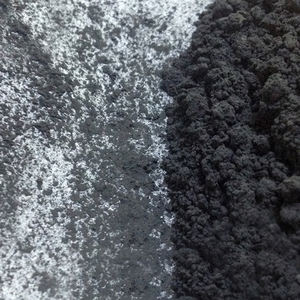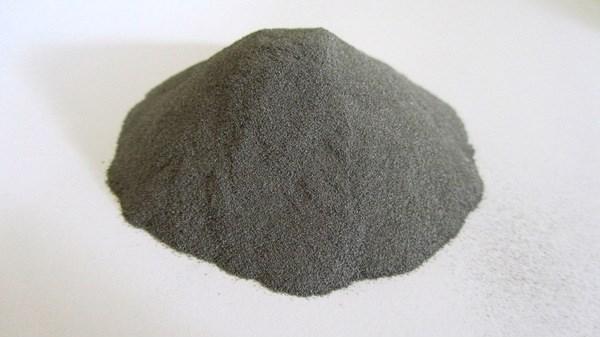Aluminum-based 3D printing powders are specialized materials designed for use in additive manufacturing processes, specifically for Powder Bed Fusion (PBF) techniques such as Selective Laser Sintering (SLS) and Direct Metal Laser Sintering (DMLS). These powders are composed primarily of aluminum, often alloyed with elements like silicon, magnesium, or titanium to improve their mechanical and processing properties. They are gaining popularity due to their lightweight nature, good thermal conductivity, and potential for high geometric complexity in a wide array of applications.
Lightweight: Aluminum is known for its low density, making aluminum-based 3D printed parts ideal for applications where weight reduction is crucial, such as in aerospace and automotive sectors.
Thermal Conductivity: These powders facilitate the production of parts with excellent heat dissipation properties, useful in heat sinks and other cooling systems.
Strength and Ductility: When alloyed correctly, aluminum powders can result in printed parts with a balance of strength and ductility, suitable for functional and structural components.
Corrosion Resistance: Aluminum naturally forms a protective oxide layer, providing inherent corrosion resistance to the printed parts.
Design Freedom: The 3D printing process allows for the creation of complex geometries and lattice structures, taking advantage of aluminum's properties to produce lightweight yet strong components.

(Al powder)
Al powder parameters refer to the various values of certain properties of the powder, such as its surface roughness, thermal stability, surface resistance, and wear and tear resistance. Some commonly used parameters for al powder include: 1. Surface roughness: This parameter measures how rough the surface of the powder is compared to that of other materials on the same workpiece. A higher value indicates better surface roughness. 2. Thermal stability: This parameter measures how well the powder will withstand high temperatures. A lower value suggests better thermal stability. 3. Surface resistance: This parameter measures how well the powder can resist small forces and interactions with other materials. A higher value indicates better surface resistance. 4. Wear and tear resistance: This parameter measures how well the powder will withstand repetitive impact or deformation. A higher value suggests better wear and tear resistance. 5. Specific gravity: This parameter measures the mass of one gram of powder when it is measured in isolation from air. A higher value indicates higher specific gravity. 6. Catalyst: This parameter measures the efficiency of a catalyst in converting chemical reactions into more powerful, more efficient reactions. 7.olyson efficiency: This parameter measures the efficiency of an oven system using certain types of cooking oils or baking agents. A higher value suggests better performance. 8. Ammonia content: This parameter measures the amount of ammonia present in the powder. A higher value may indicate a higher content of ammonia, which may increase the odor or fatigue of the powder. 9. Air concentration: This parameter measures the amount of air present in the powder mixture. A higher concentration may result in increased heat transfer between the powder and the surrounding environment. 10. Temperature range: This parameter specifies the range of temperatures in which the powder can be treated. Higher temperatures may result in higher levels of moisture content, potentially affecting the powder's performance and durability. It is important to note that these parameters are just general guidelines and may vary depending on the specific use case and processing conditions.

(Al powder)
Aerospace: Lightweight structural components, satellite parts, and aerospace fixtures benefit from aluminum's strength-to-weight ratio and design flexibility.
Automotive: Prototypes, lightweight chassis components, and intricate engine parts are being developed using aluminum-based powders to reduce vehicle weight and increase fuel efficiency.
Racing and Sports Equipment: Bicycle frames, automotive racing parts, and sports gear aluminum’s lightweight and durable properties to enhance performance.
Tooling and Fixtures: Complex, custom tooling and fixtures can be rapidly produced with aluminum powders, improving manufacturing efficiency and reducing costs.
Electronics: Heat sinks and enclosures in electronic devices take advantage of aluminum's thermal conductivity and lightweight nature.
Company Profile
3D Printing Asia is a trusted global chemical material supplier & manufacturer with over 12-year-experience in providing super high-quality 3D printing powder and relative products.
The company has a professional technical department and Quality Supervision Department, a well-equipped laboratory, and equipped with advanced testing equipment and after-sales customer service center.
If you are looking for high-quality 3D printing materials and relative products, please feel free to contact us or click on the needed products to send an inquiry.
Payment Methods
L/C, T/T, Western Union, Paypal, Credit Card etc.
Shipment
It could be shipped by sea, by air, or by reveal ASAP as soon as repayment receipt.
Q: Is Al powder as strong as traditionally manufactured aluminum parts? A: Depending on the alloy and printing parameters, 3D printed aluminum parts can achieve similar or, in some cases, improved mechanical properties compared to traditionally cast or machined parts, especially when leveraging the design advantages of AM.
Q: What are common challenges in printing with Al powder? A: Challenges include managing high thermal conductivity leading to uneven heating and cooling, potential for hot cracking, and ensuring consistent powder bed quality to avoid porosity.
Q: Can Al powder be recycled? A: Yes, unused or unsintered powder can typically be collected, sieved, and reused in subsequent prints, contributing to sustainability efforts.
Q: How does the cost of aluminum 3D printing compare to traditional methods? A: While initial setup and material costs can be higher, aluminum 3D printing offers cost savings through reduced waste, faster prototyping, and the ability to produce complex parts in lower volumes more efficiently.

(Al powder)



